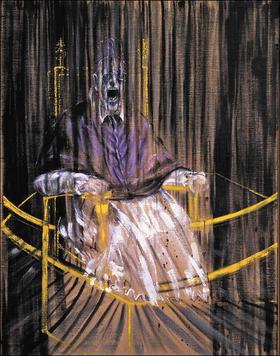CLASS ACTIVITY: Shock of the new: The view from the Edge
Watch “Shock of the new, Episode 8, “The view
from the Edge”, Robert Hughes
Youtube: http://youtu.be/AFc1BeS0vKI
Worksheet:
1. Watch the DVD/ youtube clip and Take notes.
Include:
·
list the
main themes
·
the main
artists
·
Points of
interest
Describe: Tell what you see (the visual facts). Include research about the art &
artist.
Analyse: Using the 8 Design elements and 8 design
principles; mentally separate the parts or elements, thinking in terms of
textures, shapes/forms, light/dark or bright/dull colours, types of lines,
and sensory qualities. In this step consider the most significant art
principles that were used in the artwork. Describe how the artist used them
to organize the elements.
Interpret: An interpretation seeks to explain the
meaning of the work based on what you have learned so far about the
artwork, what do you think the artist was trying to say?
Judgement: After careful observation, analysis, and interpretation
of an artwork, you are ready to make your own judgment. This is your
personal evaluation based on the understandings of the work(s).
Record answers in your journal
3. Compare the painting with corresponding photo or painting provided.
Answer: does this comparison bring a new
meaning to the painting?
How does the painting fit into the historical
context of the photo / image?
If you separate the two images, is it now
possible to see one without thinking of the other?
What impact does this have on you?
Why has Robert Hughes described these artists
as having a ‘view from the edge’?
Analysis & Comparison 1:
Analyse this painting:

Edvard Munch, The Scream, 1893, tempera and crayon on cardboard, 91 x 73.5 cm
It is assumed that here as well his starting
point was private feelings and experience. His diaries contain several remarks
that seem to form a background to this depiction of existential angst, among
them the following: “I was walking along the road with two friends – Then the
sun went down – The sky suddenly turned to blood and I felt a great scream in
nature –”. Munch produced several drawings and prints of this subject.
Compare to this photograph:
Chachapoya mummy, Musee de l'Homme

This is an image of the mummified remains of
a Chachapoyas warrior. (An Inca warrior, Peru)
It is a hypothesis based on conjectures,
although not supported by documents that
Munch was inspired to paint his masterpiece
by this mummy that the Norwegian artist and Paul Gauguin saw
together at the 1889 Trocadero exposition in Paris.
Analysis & Comparison 2:
Analyse this painting:

Frances Bacon, 1953, ‘Study after Velazquez’s Portrait of pop Innocent X’, oil on canvas,
This painting is on of a series of over 45
variants of the Velázquez painting in which Bacon executed throughout the 1950s
and early 1960s.
Compare to this painting:

Diego Velázquez,
1650, Portrait of Pope Innocent X,
oil on canvas
Analysis & Comparison 3:
Analyse this painting:

Franz Marc, 1911 ‘The Large Blue Horse’, oil on canvas, 105x181.1cm
The Blue Rider, was a magazine publication
series, which he was a co-founder of; it focused on the movement, and it was
well known to be connected to a small group of artists who were in charge of
posting images, as well as breaking stories, during the time that the magazine
was in existence in Germany. They focussed upon nature rather than depicting
the immediate war torn environment.
Compare to this photograph:

Nazi Germany Holocaust image